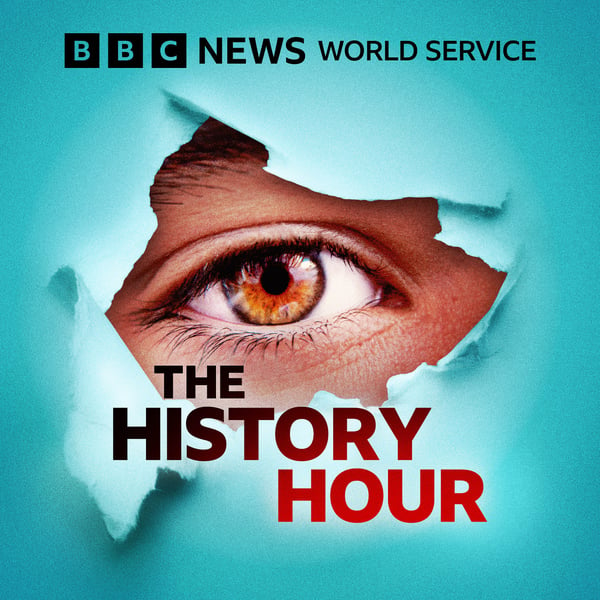India’s ambitious ID scheme and the iconic Princess Diana photo
The History Hour
BBC
4.4 • 879 Ratings
🗓️ 10 May 2024
⏱️ 51 minutes
🧾️ Download transcript
Summary
This week, how more than one billion people living in India were given a unique digital ID during the world's largest biometric project. The Aadhaar scheme was launched in 2009 but it wasn't without controversy. Our guest, digital identity expert Dr Edgar Whitley, tells us about the history of ID schemes around the world.
Plus, the Spanish doctor whose pioneering surgery helped millions of people to get rid of their glasses and see more clearly. And why East Germany's thirst for caffeine in the 1980s led to an unusual collaboration with Vietnam.
Also, the story behind one of the most famous royal photographs ever taken – Princess Diana sitting alone on a bench in front of the Taj Mahal in 1992. The man who took the image tells us more.
And finally, how a Ghanaian athlete, Alice Annum, earned the nickname ‘Baby Jet’ after her medal-winning success in the 1970 Commonwealth Games.
Contributors: Nandan Nilekani - former chairman of the Unique Identification Authority of India Dr Edgar Whitley - digital identity expert at the London School of Economics Dr Carmen Barraquer Coll – daughter of ophthalmologist Jose Ignacio Barraquer Moner Siegfried Kaulfuß – East German official in charge of coffee production in Vietnam Anwar Hussein – royal photographer Alice Annum – retired Ghanaian athlete
(Photo: Scanning fingerprints for Aadhaar registration. Credit: David Talukdar/NurPhoto via Getty Images)
Transcript
Click on a timestamp to play from that location
| 0:00.0 | Hello and welcome to the History Hour podcast from the BBC World Service with me Max Pearson |
| 0:10.2 | the past brought to life by those who were there. |
| 0:13.0 | This week a Spanish eye doctor whose pioneering work started back in the 1940s |
| 0:18.0 | helped millions to see more clearly. |
| 0:21.0 | Nobody understood what he wanted to do and so the world said this man is talking foolish. |
| 0:28.4 | Why make a surgery if you can use glasses? |
| 0:31.9 | Plus why the Coffey-M Mad East Germans did a deal with Vietnam, the African sportswoman |
| 0:37.6 | forever known as Baby Jet, and the story behind that iconic photo of Princess Diana in front of the Taj Mahal. |
| 0:45.0 | She looked with rejectors and smiled. |
| 0:48.0 | She said on the bench and hoping everything will go well, but it was a bit sad in a way. |
| 0:55.0 | That's all coming up in the podcast and indeed that's where we're going to start in India, a country of many |
| 1:00.7 | superlatives and contradictions, a vast population spanning sunny southern beaches, |
| 1:06.6 | steaming forests, baking deserts and towering snow-capped mountains, a vibrant and growing economy, but with millions of people living in poverty. |
| 1:17.0 | As part of India's remarkable efforts at development in recent decades, in 2009, the world's largest biometric project was launched. The aim was to register |
| 1:26.7 | and identify as much of the population as possible, and it went by the name of Adha, which means foundation. |
| 1:33.8 | But the scheme wasn't without controversy. |
| 1:36.5 | Nandan Nilekany, masterminded Adha's creation, |
| 1:39.7 | and he's been speaking to Dan Hardoon. |
| 1:41.9 | Nobody had actually built anything to give a billion people a unique ID number, |
| 1:48.0 | certainly at the scale that we were intending. |
| 1:51.0 | I met many people who said their lives had changed because of |
| 1:54.3 | Adar. Without this idea they could not have traveled on trains, got a bank account, |
... |
Transcript will be available on the free plan in -321 days. Upgrade to see the full transcript now.
Disclaimer: The podcast and artwork embedded on this page are from BBC, and are the property of its owner and not affiliated with or endorsed by Tapesearch.
Generated transcripts are the property of BBC and are distributed freely under the Fair Use doctrine. Transcripts generated by Tapesearch are not guaranteed to be accurate.
Copyright © Tapesearch 2025.

